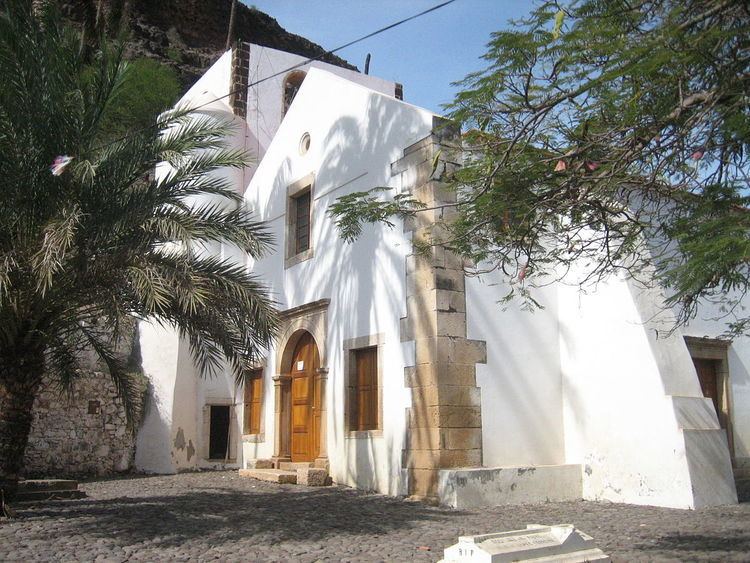Portugal 68,145 | ||
 | ||
United States 33,119 (Cape Verdeans born) | ||
Cape Verdeans, also called Cabo Verdeans (Portuguese: cabo-verdiano), are the citizens of Cape Verde. Cape Verde is a sociedade mestiça (mestizo society; as described in Portuguese), which means that it is home to mixed race people. Nearly all Cape Verdeans or their ancestors immigrated within the past five centuries.
Contents
Map of Cape Verde
Racial groups
The Cape Verde archipelago was uninhabited when the Portuguese discovered it in 1456. Slaves from adjacent West Africa were brought to the islands to work on Portuguese plantations. As a result, many Cape Verdeans are mulattoes (mestiços in Portuguese), having biracial origins. European ancestors also include Spanish and Italian seamen who were granted land by the Portuguese Empire, followed by Portuguese settlers, exiles, and Portuguese Jews who were victims of the Inquisition. Many foreigners from other parts of the world settled in Cape Verde as their permanent country. Most of them were Dutch, French, British (English), Arab and Jewish (from Lebanon and Morocco).
A genetic study revealed that the ancestry of the population in Cape Verde is predominantly European in the male line and West African in the female line; counted together the percentage is 56% West African and 44% European.
Diaspora
Prior to independence in 1975, many thousands of people emigrated from drought-stricken Portuguese Cape Verde, formerly an overseas province of Portugal. Because these people arrived using their Portuguese passports, they were registered as Portuguese immigrants by the authorities. Today, more Cape Verdeans live abroad than in Cape Verde itself, with significant emigrant Cape Verdean communities in Brazil and in the United States (500,000 Cape Verdeans descent, with a major concentration on the New England coast from Providence, Rhode Island, to New Bedford, Massachusetts).
In 2008, Portugal’s National Statistics Institute estimated that there were 68,145 Cape Verdeans who legally resided in Portugal. This made up "15.7% of all foreign nationals living legally in the country." Most notably, Portuguese professional footballer, Cristiano Ronaldo is of part-Cape Verdean descent through his paternal great-grandmother, Isabel da Piedade who at age 16 immigrated to the Portuguese island of Madeira from her native Praia, Cape Verde where she worked in the main city of the island, Funchal and married a Portuguese man, José Aveiro, Cristiano's paternal great-grandfather.
There are other significant Cape Verde populations in Angola (45,000), São Tomé and Príncipe (25,000), Senegal (25,000), the Netherlands (20,000, of which 15,000 are concentrated in Rotterdam), France (25,000), Spain (12,500), Italy (10,000) Luxembourg (7,000) and Scandinavia (7,000). There is a Cape Verdean community in Argentina numbering 8,000.
Languages
Cape Verde's official language is Portuguese. It is the language of instruction and government.
Cape Verdean Creole is used colloquially, and is the mother tongue of virtually all Cape Verdeans. Cape Verdean Creole or Kriolu is a dialect continuum of a Portuguese-based creole. There is a substantial body of literature in Creole, especially in the Santiago Creole and the São Vicente Creole. Creole has been gaining prestige since the nation's independence from Portugal.
Religion
More than 93% of the population of Cape Verde is nominally Roman Catholic, according to an informal poll taken by local churches. About 5% of the population is Protestant. The largest Protestant denomination is the Church of the Nazarene.
Other religious groups include the Seventh-day Adventist Church, the Church of Jesus Christ of Latter-day Saints (Mormons), the Assemblies of God, the Universal Church of the Kingdom of God, the New Apostolic Church, and various other Pentecostal and evangelical groups. There are also small Bahá'í communities and a small Muslim community. The number of atheists is estimated at less than 1 percent of the population.
Culture
The culture of Cape Verde reflects its mixed West African and Portuguese roots. It is well known for its diverse forms of music such as Morna, and a wide variety of dances: the soft dance Morna, the Funaná, the extreme sensuality of coladeira, and the Batuque dance. These are reflective of the diverse origins of Cape Verde's residents. The term "Criolo" is used to refer to residents as well as the culture of Cape Verde.
